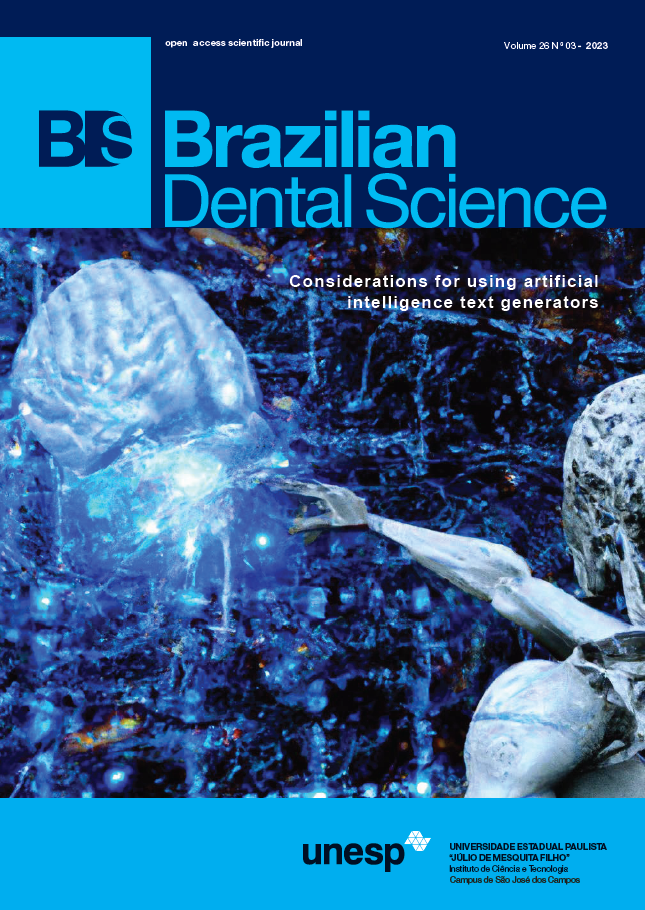Evaluation of different teaching methodologies by assessing the performance of dentistry students
DOI:
https://doi.org/10.4322/bds.2023.e3768Abstract
Objective: The aim of this study was to compare the performance of day- and evening-class students in the first semester test of Dental Materials in the School of Dentistry at São José dos Campos - UNESP, who were exposed to traditional lectures (TRAD) and Team-Based Learning (TBL). Material and Methods: The results of Dental Materials first semester test of students, from day and evening classes of 2016 were tabulated and analyzed in this research. The groups formed for the execution of the methodology were randomized using the individual global average of the previous year of the students, and the groups were composed of 6 to 7 members, maintained throughout the course. During the correction of the tests, the subject of each question and the applied methodology (TBL and TRAD) were identified. Responses of each question were graded separately according to the subject for comparison between methodologies. A total of 88 tests were evaluated. The performance was evaluated through a comparison of the average grade of each question, related to a specific learning methodology. The data were submitted to t-test. Results: The students’ overall performance was similar when both methodologies were compared. Students from day class presented higher grades with TBL whilst evening class students presented better performance in questions with traditional lectures. Conclusion: Active learning should be further implemented in Brazilian Dental Schools to change students’ habits aiming to improve their personal and social skills besides of professional technical knowledge.
KEYWORDS
Educational activities; Dental Schools; Learning; Student evaluation; Higher education.
Downloads
Published
How to Cite
Issue
Section
License
Brazilian Dental Science uses the Creative Commons (CC-BY 4.0) license, thus preserving the integrity of articles in an open access environment. The journal allows the author to retain publishing rights without restrictions.
=================




























